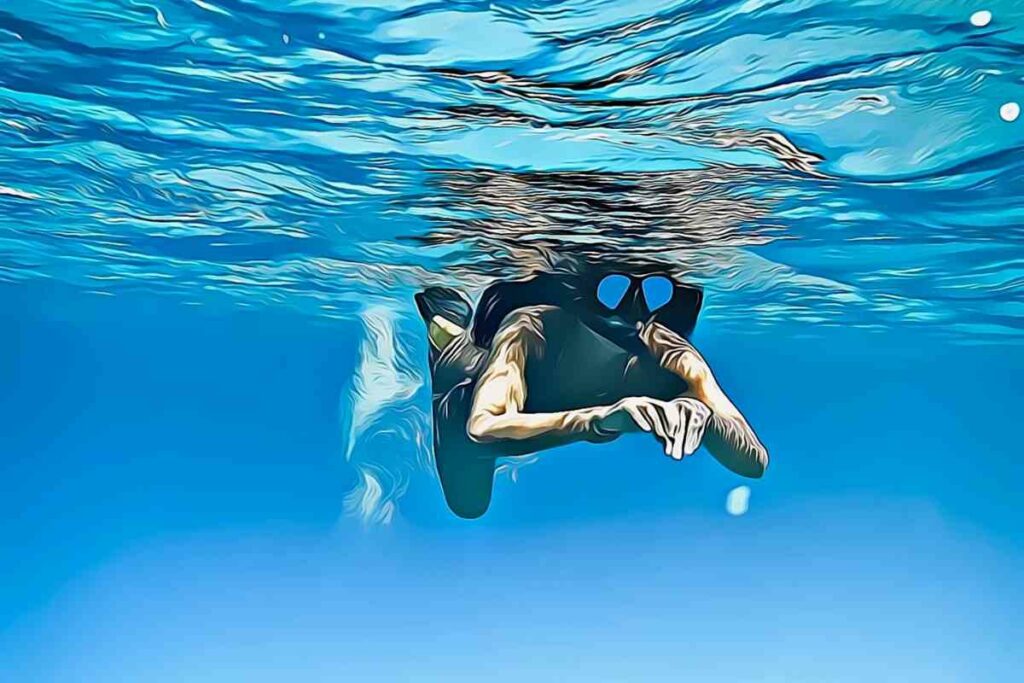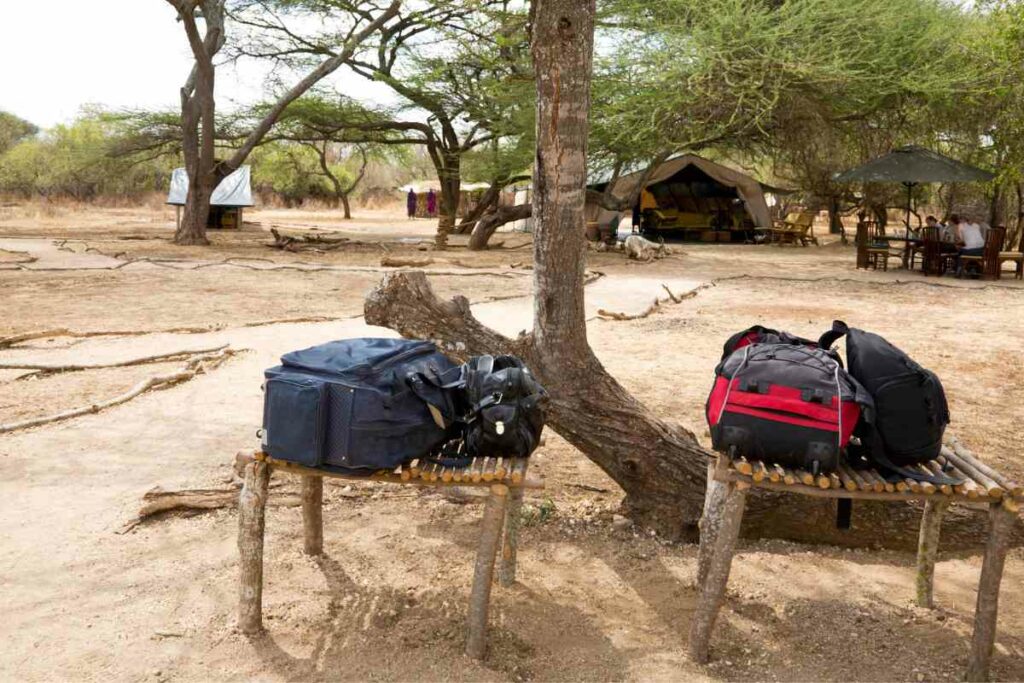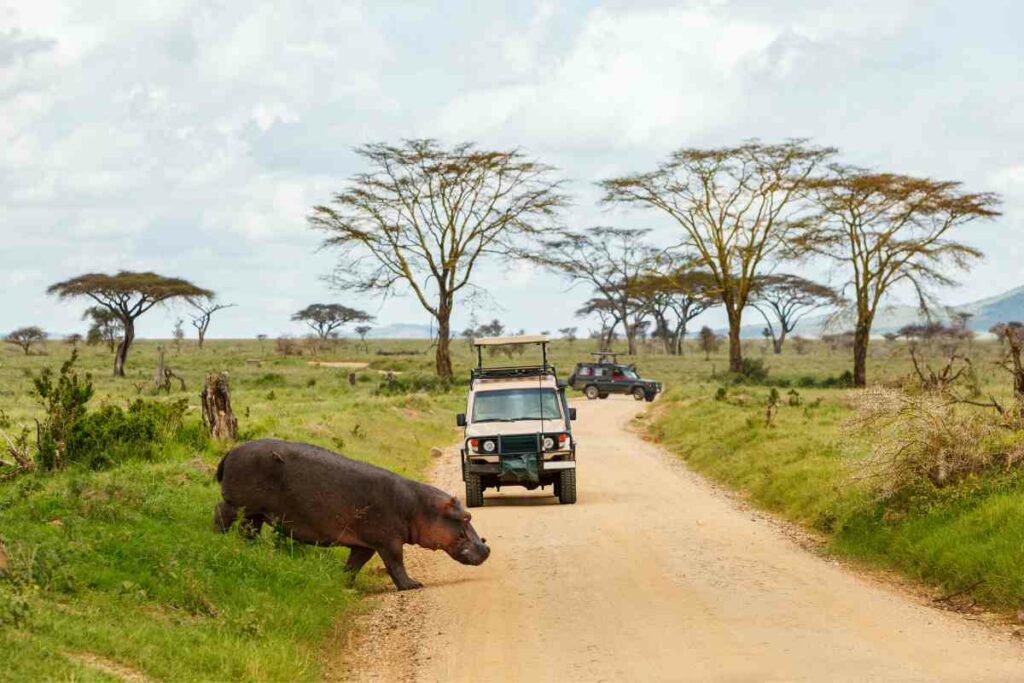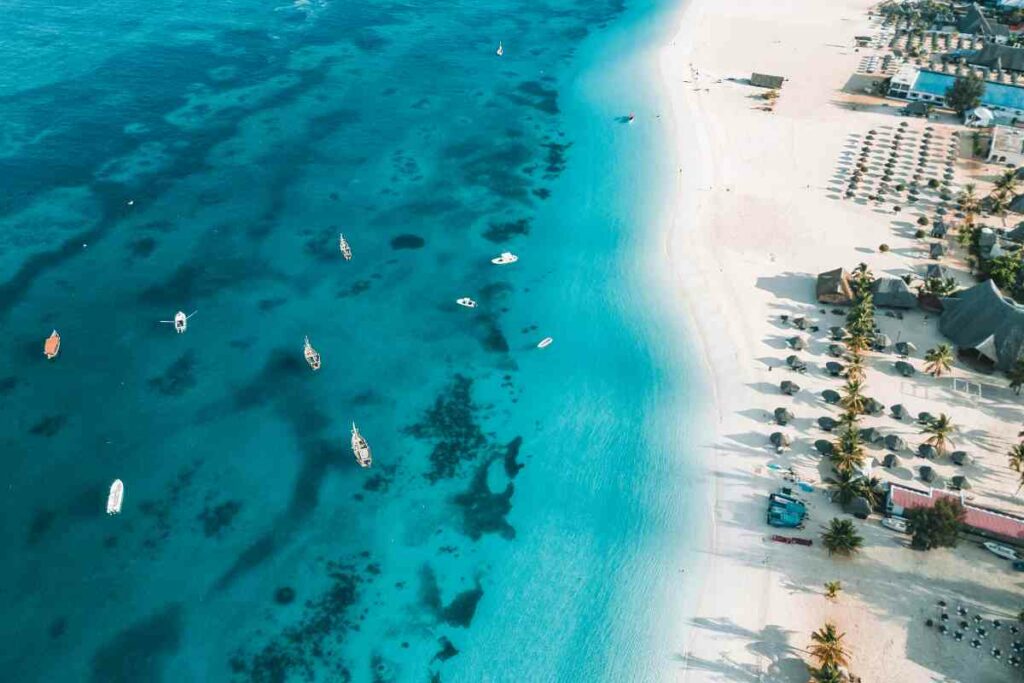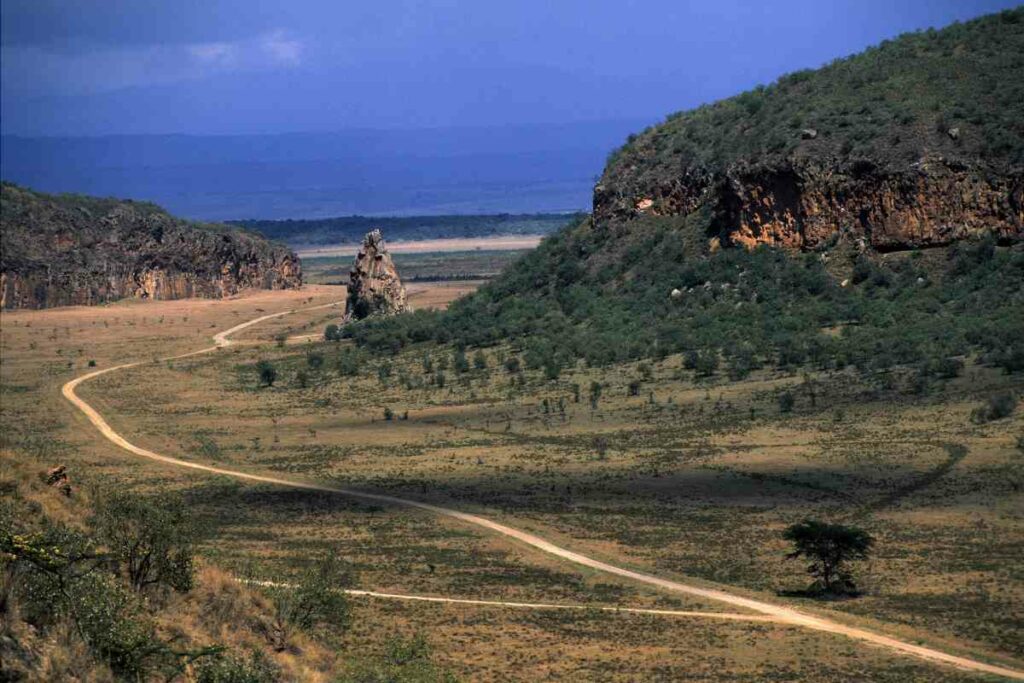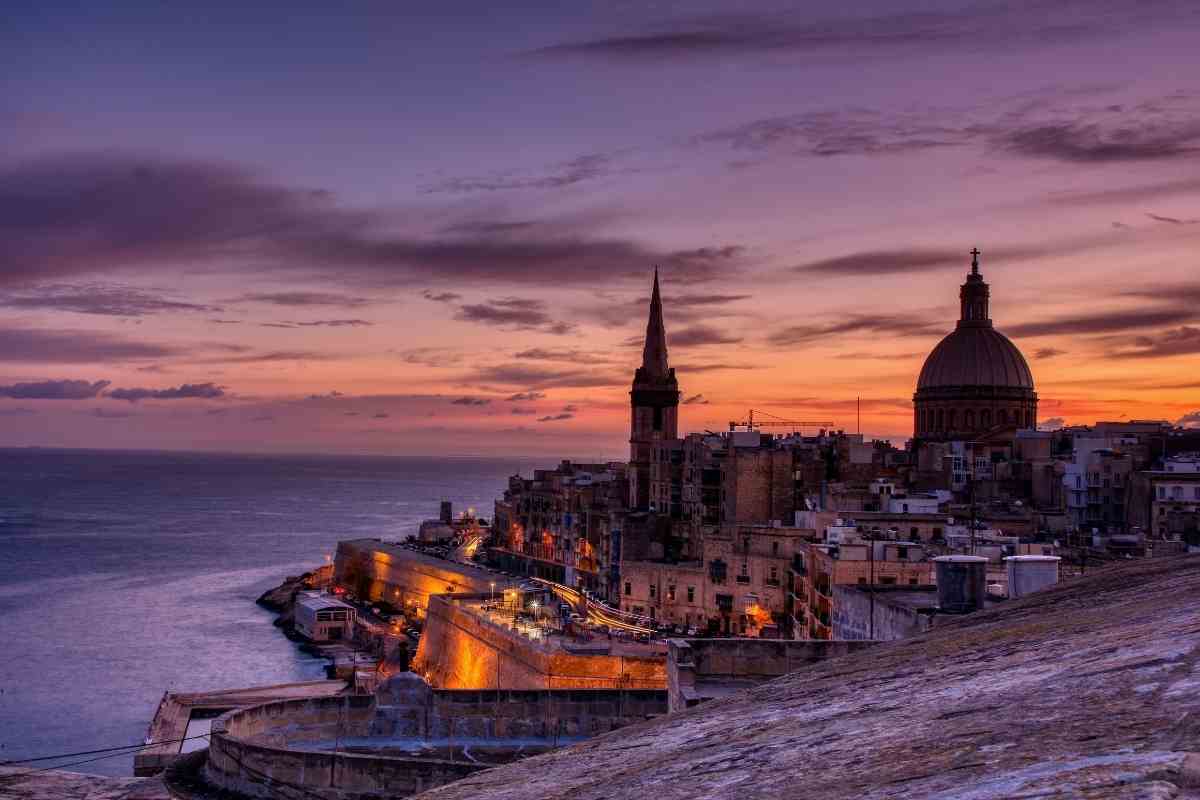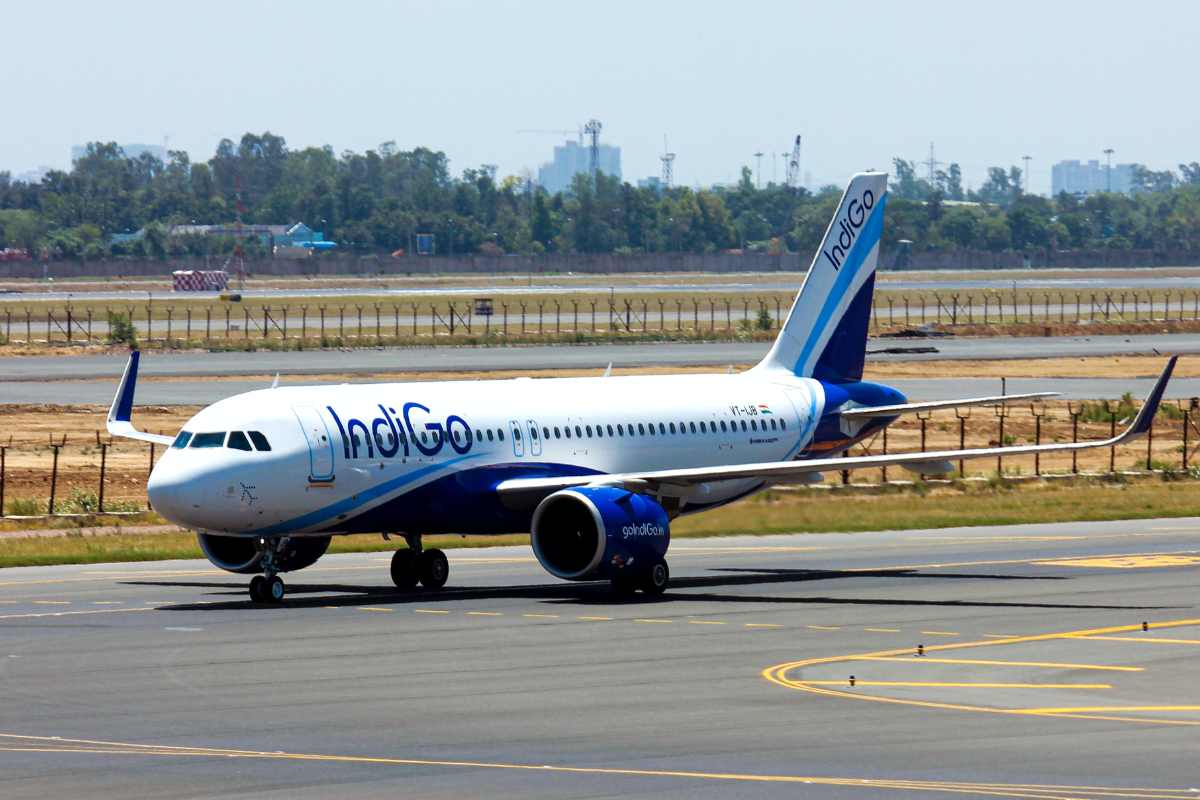Although Kenya has several amazing safari destinations, the Masai Mara National Reserve is the best of the bunch.
It has a vibrant ecosystem that boasts over 90 mammal species and 470 bird species.
The diverse, beautiful landscapes are ideal vacation locations.
First time going to the Mara?
Worry not. Our comprehensive guide will provide all the information about traveling to the Masai Mara National Reserve.
Brief History of The Masai Mara
The Masai Mara, or the Mara, is a vast savannah grassland dotted with wood and rocky outlands.
Established in 1961, the principal purpose of the 580-square-mile reserve was to be a wildlife sanctuary.
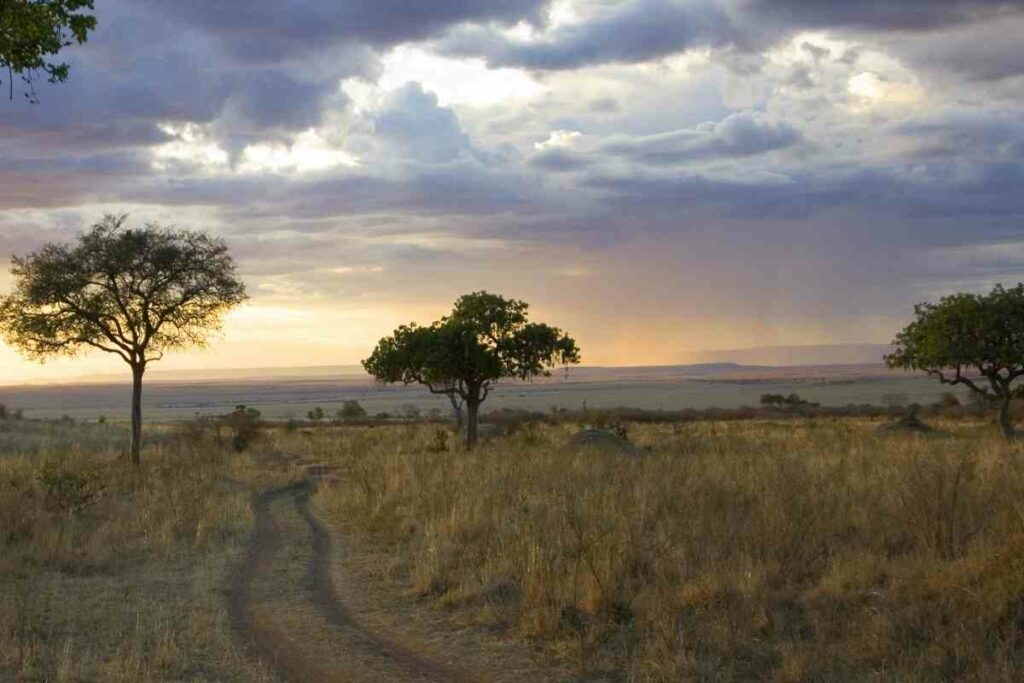
Over 13 conservancies have been set within the reserve to promote healthy ecosystems, tourism, wildlife conservation, and community enterprise development.
The Mara reserve is located in the Great Rift Valley, with Narok being the closest town.
The Mara River sustains life in the Maasai Mara ecosystem and has four main tributaries:
- the Talek
- Sand
- Engaro
- Engito rivers
The southern part of Mara borders the Serengeti National Park in Tanzania, forming the Serengeti Mara ecosystem, which is famous for the Great Wildebeest Migration.
What Are The Top Attractions In The Masai Mara
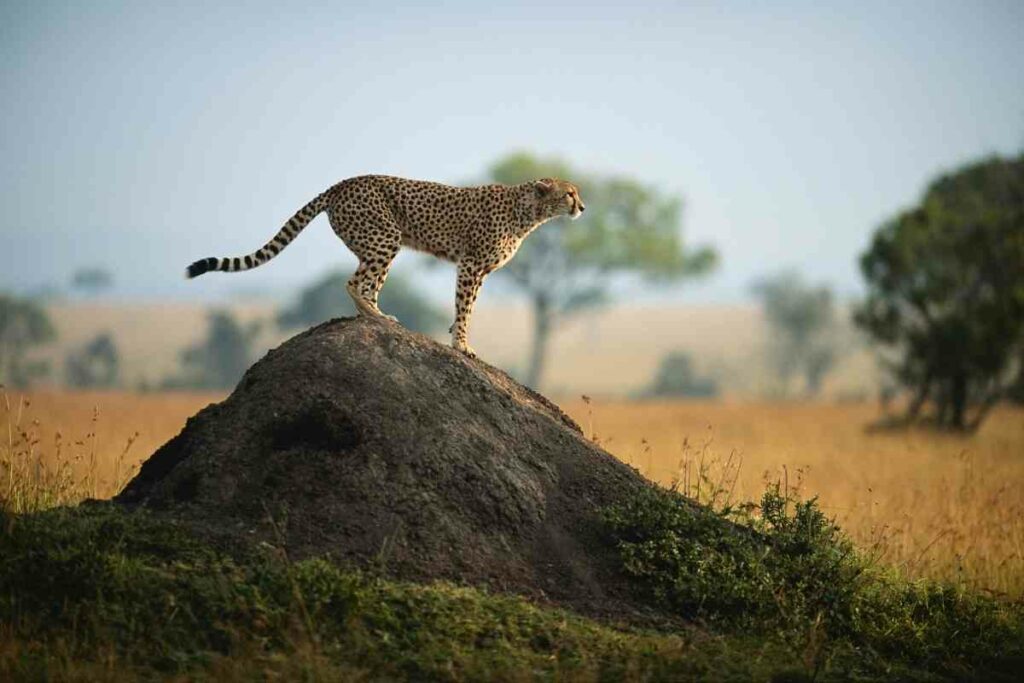
1. The Mara Crossing
One of the most anticipated annual events, the wildebeest migration, is a spectacle to behold.
Typically, the crossing happens between July and October as the animals make their way into the Mara from the neighboring Serengeti National Park in Tanzania.
The migration constitutes of wildebeests, zebra, gazelles and antelopes.
Zebras are the biggest herd after the wildebeests due to their symbiotic relationship.
In Particular – Wildebeest’s acute sense of smell makes them excellent trackers of food and water sources, while the zebra’s good sight comes in handy against the predators prowling in the savannah.
Besides, zebras prefer to eat the top shoots of grass, leaving it short for the trailing wildebeests.
Watching the crossing is an emotional roller coaster.
Seeing the migration party make it to the opposite side of the Mara River is fascinating, – but not all the animals who attempt the cross make it.
An estimated 6,000 wildebeests die in the crossing. Making it to the other side is a mixture of fitness and luck.
First off, the banks of the river are very steep, and the trampling leaves many animals with injuries even before they hit the water.
An injured animal can easily drown and is easy prey.
Inside the raging Mara River lurks the ferocious Nile crocodile.
Efficient and aggressive killing machines, the 700–pound crocs will pounce with devastating precision causing massive causalities.
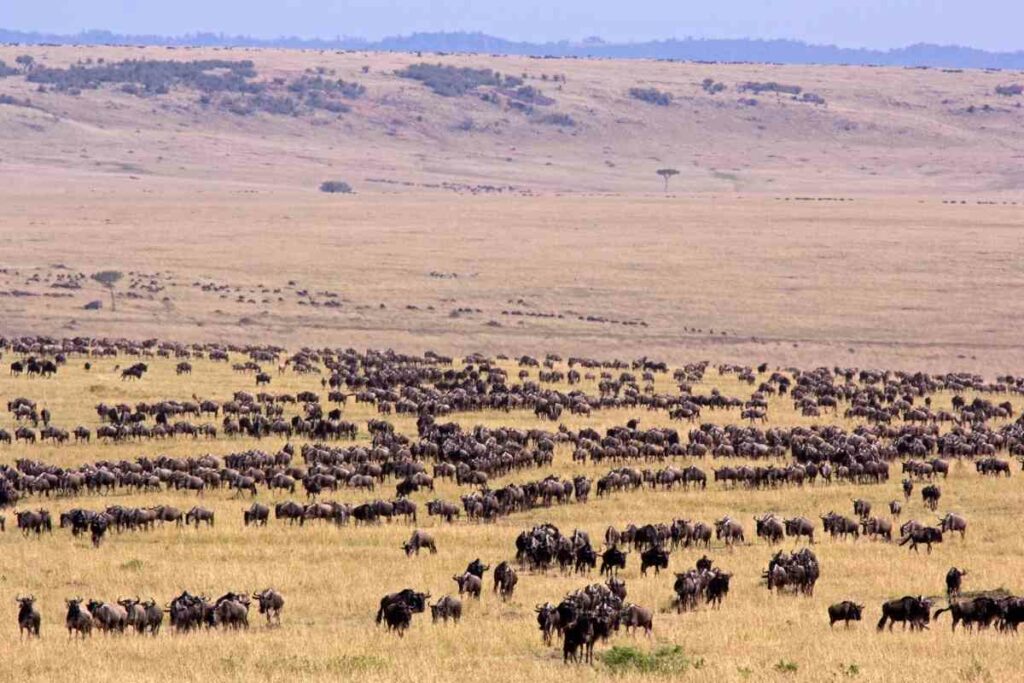
Even after completing this grueling course, the migrating masses are not out of the woods yet.
The fiercest African predators: lions, leopards, spotted hyenas, and wild dogs, lurk in the tall grasses and shrubs nearby.
You will witness multiple hunting sequences during the crossing.
Some of these carnivores are brave enough to attempt to cross the river going after the grazers.
2. The Big 5
The big five are the biggest attraction of any African safari.
The animals are:
- the mighty African lion
- gigantic African bush elephants
- bad-tempered cape buffaloes
- rhinos
- and the shy leopard
A visit to Masai Mara National Reserve gives you the rare opportunity to see all these animals in one go.
Lions
The African lion is the undisputed king of the jungle.
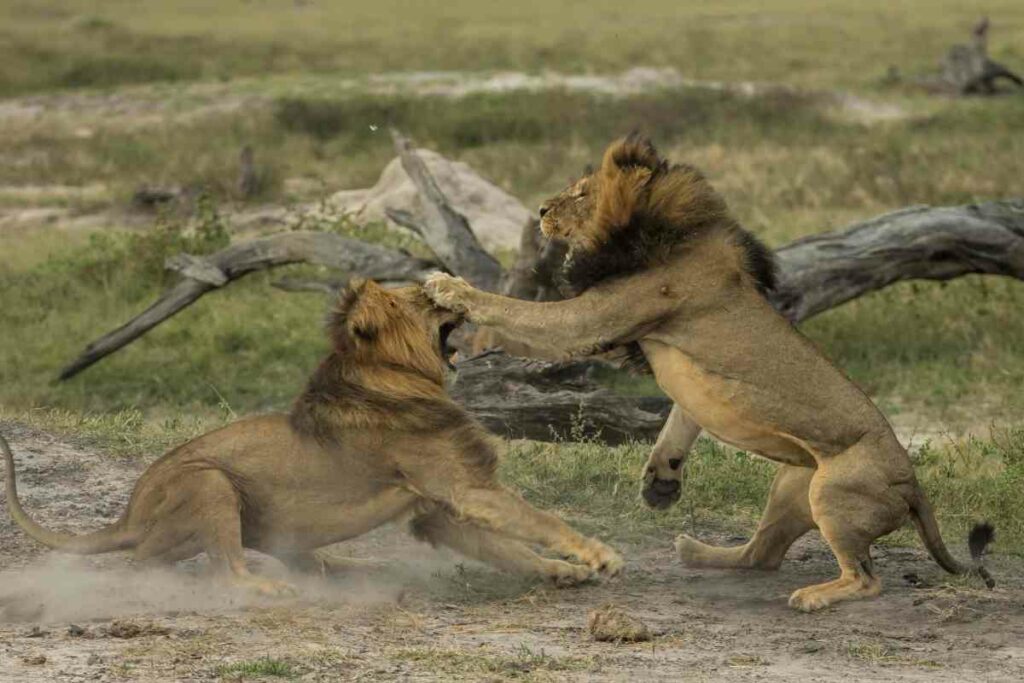
Currently, around 900 lions are roaming around the Masai Mara National Reserve.
They are the easiest big cats to spot in the park since they live in pride of 15-20 members.
Despite lions being bigger and stronger, the agile lionesses do most of the hunting to feed the restless pack.
Lions will spend most of the day napping, marking their territory with urine, or the occasional but deadly fight to be the dominant male.
Elephants
The African bush elephant is the largest land mammal on the planet.
It can grow up to 3 meters high and weigh as much as 6 tons.
Despite their mammoth size, elephants are generally calm beats unless threatened.
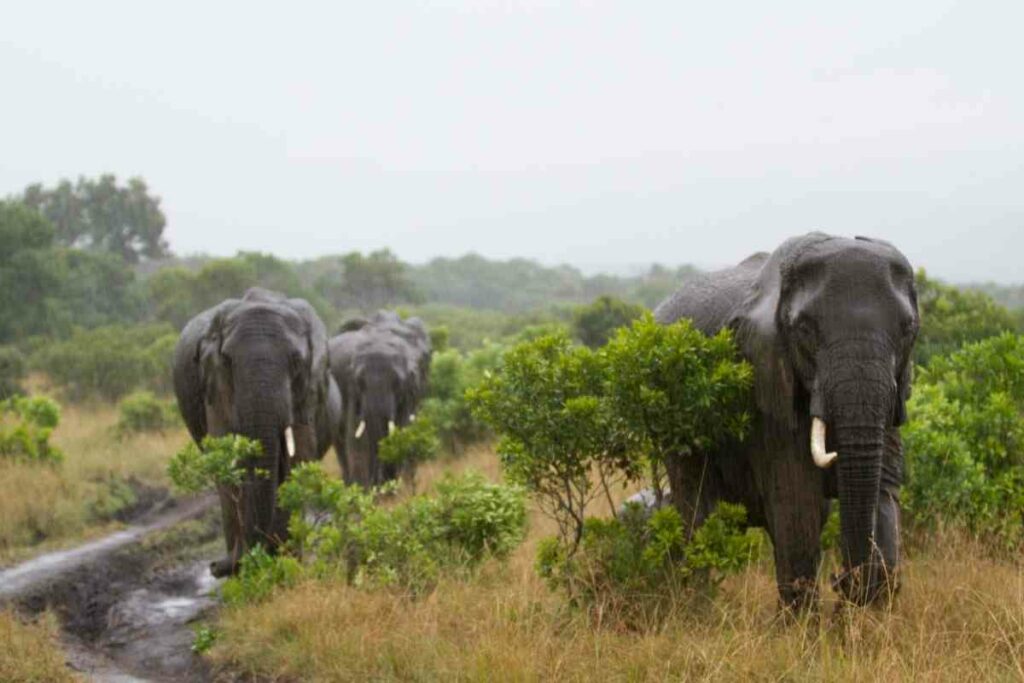
They have an acute sense of smell and touch in addition to a perfect memory.
Their population dropped drastically due to poaching, and it took government intervention to work closely with the local Masai community to restore their number.
Currently, the Mara boasts over 2500 elephants.
Buffalo
The African buffalo is extremely aggressive and unpredictable.
You cannot domesticate it like the water buffalos. In the savannah, only lions attempt to take down mature buffalos.
Even then, it calls for expert hunting skills and teamwork to have the buffalo on its knees.
The lions must be highly cautious of the buffalo’s horns and strong kicks, which can severely injure or kill the lions.
Rhino
The black rhino is the most endangered species of the big five due to poaching and trophy hunting.
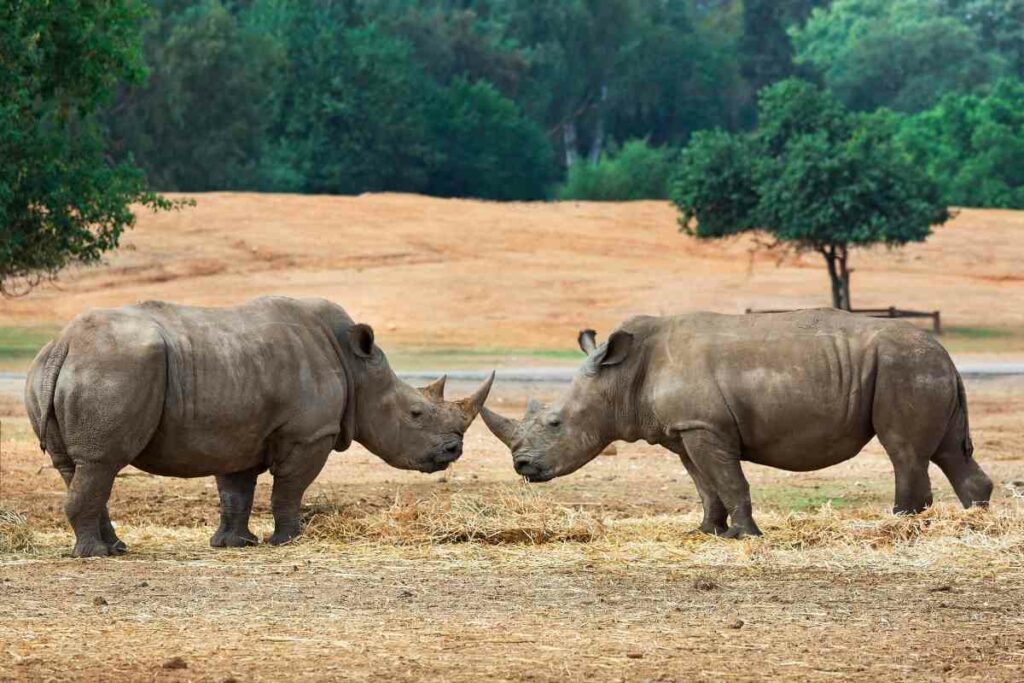
Besides, rhinos rarely mate in captivity or confinement, severely affecting their repopulation.
Maasai Mara has a rhino population of around 35 to 50 black rhinos.
To increase your chances of spotting one, head south to Sala Camp. It is located along the Sand River and is a dedicated black rhino sanctuary where armed wardens monitor their movement daily to dissuade poachers.
Leopards
Leopards are solitary cats and the hardest to spot in the Mara.
You can only spot two leopards together during mating.
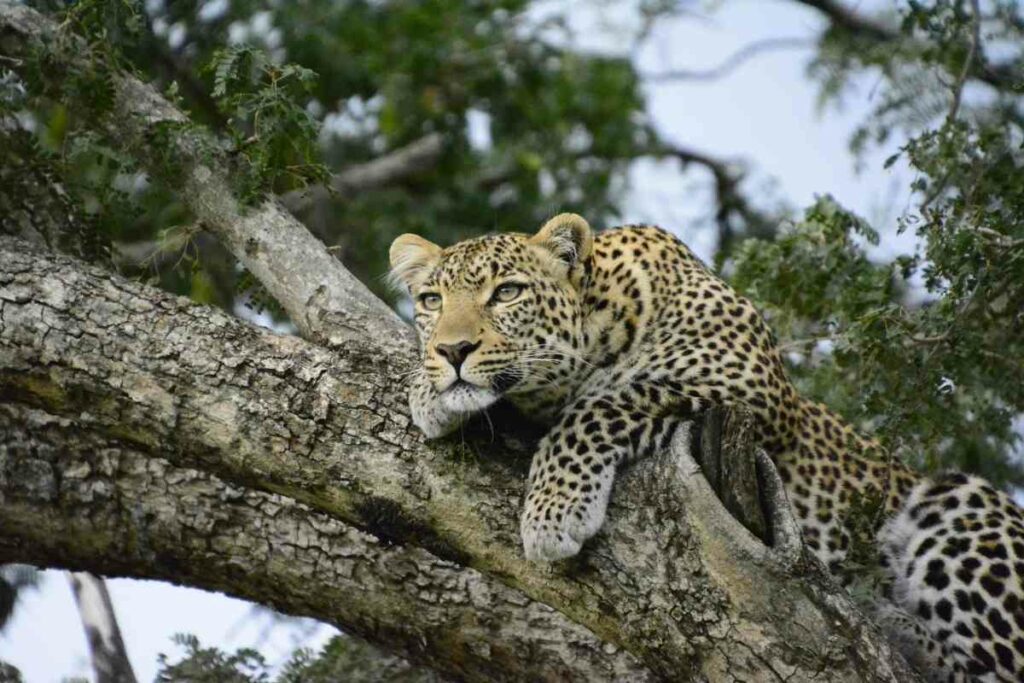
Skilled climbers, the big cat has a strong set of limbs that can carry prey twice its size up trees for safekeeping.
They spend most of their day asleep on tree branches and do most of the hunting at night.
Most leopard sightings are around the Mara Conservancy.
3. The Big Cats
The Maasai Mara has plenty of big cats; the African lion, leopard, and cheetah.
Their prowess inspired the world-winning BBC documentary ‘The Big Cats Diary.’
Exclusively shot in the Mara; the 8-year documentary follows the daily lives of these big cats, including hunts, mating, and striving for survival.
While the population has declined over the years due to human interference and drought, you can never miss out on these big cats when scouting the reserve.
4. Hot Air-Balloons
Hot air balloon safari offers you a unique 360- degree bird’s eye view of the expansive national reserve.
You get to enjoy an unobstructed view of the animals in their natural habitats, track their movements and, if you are lucky, witness a hunting expedition.
Apart from the Wildlife – You can enjoy a bush breakfast on the backdrop of the fascinating views of the Great Rift Valley.
The balloons can accommodate 5-20 people.
If your kid is above three years, they can join you in the adventure. As a safety precaution, keep a keen eye on them throughout the trip.
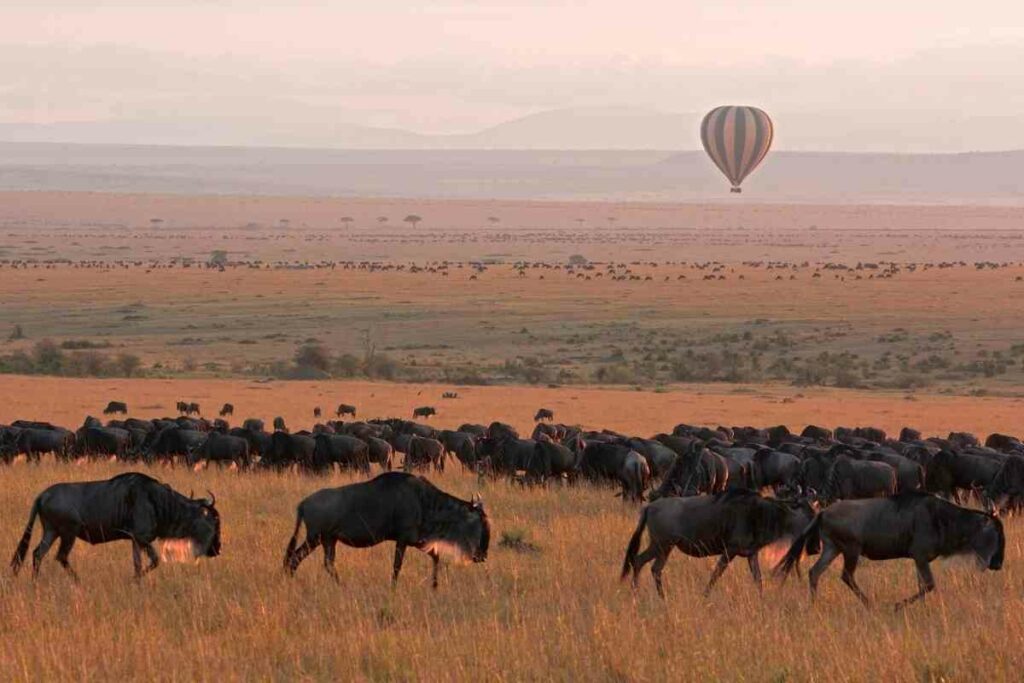
A licensed balloon pilot operates each balloon in conjunction with a dedicated ground crew who monitor it as it glides over the reserve.
The rides usually last around an hour and cost around $400-500 per person.
Do not let the fee deter you from taking a balloon ride over the Mara; it is worth every penny.
You can view as many animals in the one-hour flight as you would have in a whole day game drive.
It is a great experience, and memories last a lifetime.
5. Masai Culture
A visit to the Masai Mara is never complete without a visit to a Masai village.
Indigenous to the area, these community has lived side by side with wildlife for generations.
Due to their nomadic nature, the villages are clusters of temporary mud structures called manyattas.
The Masai are very welcoming people and treat visitors to rounds of singing and dancing.
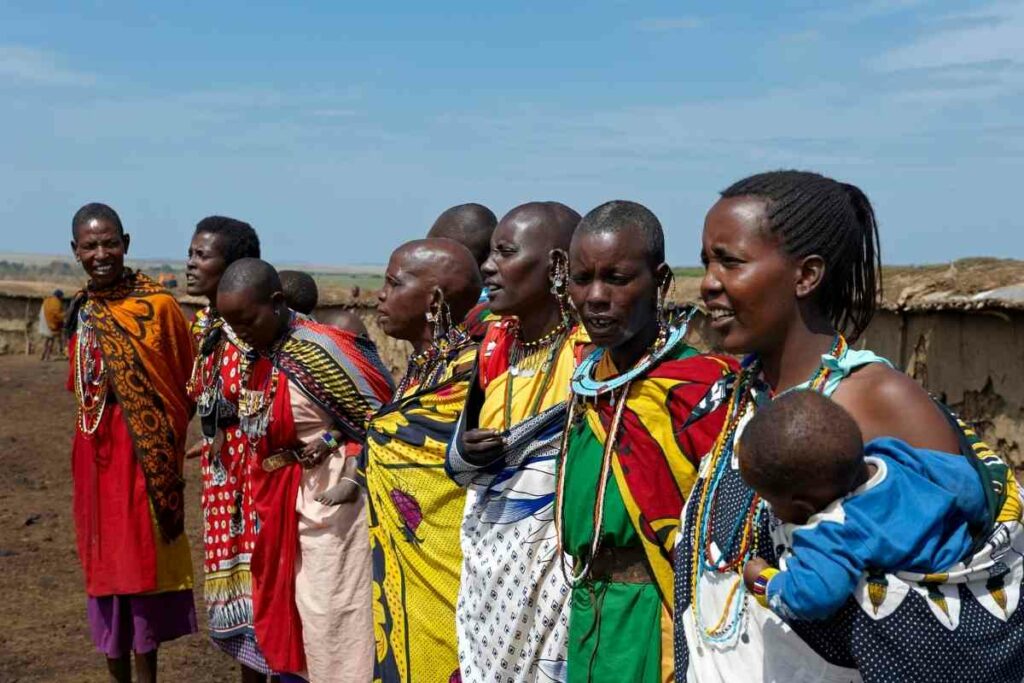
Adamu, the jumping dance is spectacular, with young and athletic men trying to outjump each other.
You can join in, but it’s quite a tall order, as a seasoned Masai can jump 2-3 meters vertically.
While it is now a form of entertainment, traditionally, the young used it to court prospective maidens.
A visit to the villages gives you first-hand insight into the rich cultural diversity of this community.
The Masai wear shukas, a thick woven cotton fabric accessorized by intricate beaded necklaces and bracelets.
The garments are usually brightly colored, predominantly red, with blue and black hues.
They are also expert sculptors, and you can buy the wildlife-inspired curio from various shops strewn within the conservancy.
More intriguing is the customary lion hunting, which is now phased out.
It was considered a rite of passage (ala-mayo) and a sign of bravery to successfully kill a lion in the open savannah wielding a spear and shield only.
The practice was strictly for cultural purposes having strict rules and regulations.
No trophy hunting and hunting of lionesses ensured the community did not wipe the lion population out of extinction.
Remarkably – The involvement of the local community has been key to the conservation efforts of the Mara. Sensitization and empowerment of the natives have significantly reduced human-animal conflict, especially in the dry season when the pasture is scarce.
Besides, in-depth knowledge of the terrain and being brave warriors (morans) make the Masai the best guides and guards around the Mara Ecosystem.
Best Time To Visit Masai Mara
The Mara is full of surprises and twists; you can visit any time of the year.
However, like with any safari, the dry season is better.
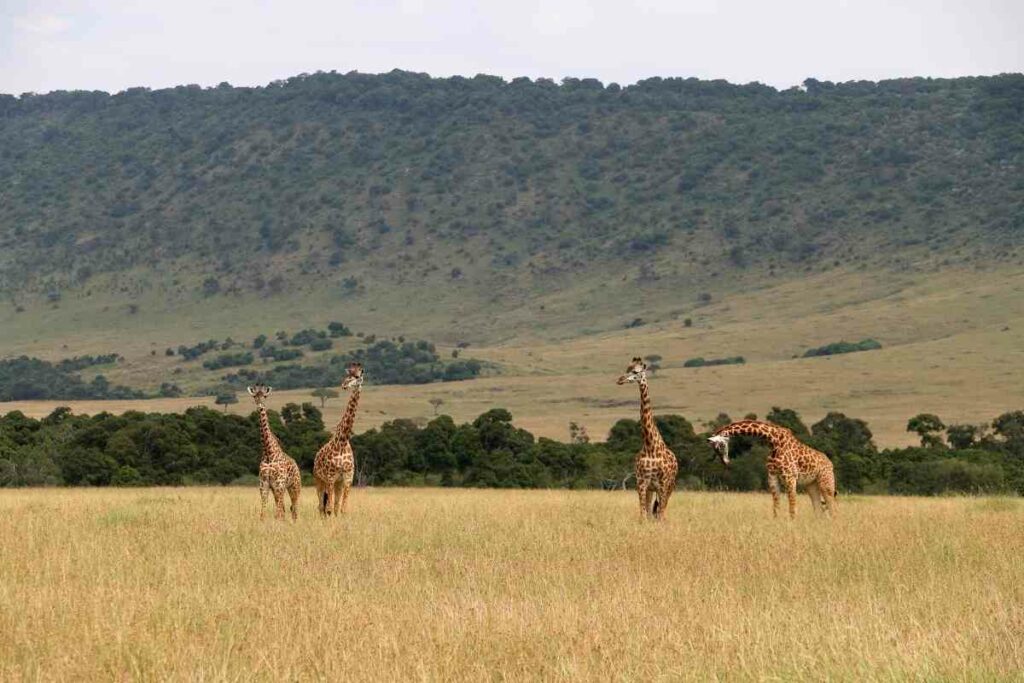
Consequently, the best time to visit the Masai Mara National Reserve is July to October, primarily because of the annual wildebeest migration.
Being the dry month, animals move closer to water sources for cooling and nourishment.
It makes it easier to spot animals under the dilapidating vegetation.
There is little or no rainfall during this period, making the safari more pleasurable.
If you like birds, visit the Mara between November and March. The park is usually buzzing with life after the short rainy season.
Most migratory birds return from global trotting during this period, making the sunsets quite stunning.
Sweet melodies in the evening and watching the sunset over the horizon are very relaxing.
Moreover, if you are on a budget, this is the best time to visit the Masai Mara.
It is less crowded since the wildebeest herds have returned to the Serengeti.
As a result, the establishments offer discounts and complimentary perks to encourage visitors during these months.
How To Get To Masai Mara
The Mara National Reserve is located approximately 180 miles from Nairobi.
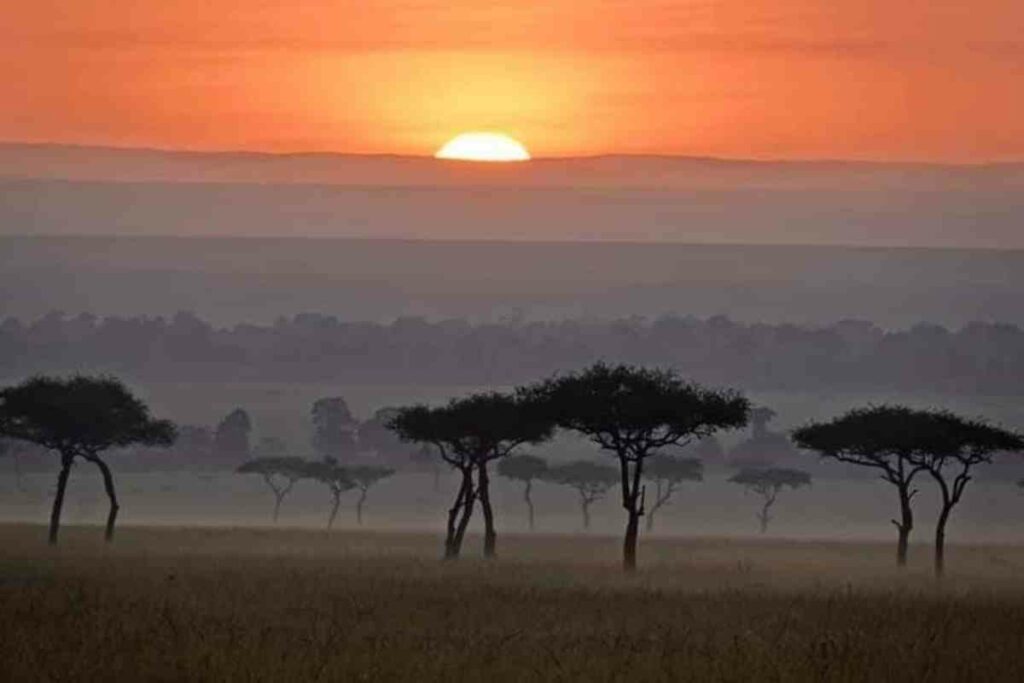
You can either go by road or fly into the Mara.
Here are the two options.
Air
Domestic flights usually operate from Wilson Airport, 17km West of JKIA.
Transfers are generally by road, taking around 50 minutes if you use the busy Mombasa Road.
Opt for the newly constructed Nairobi Expressway to avoid the hustle and bustle of Nairobi traffic.
It will cut your drive by more than half while giving you a gleaming landscape of the capital’s iconic landmarks.
A flight from Wilson to Masai Mara takes approximately 45-60 minutes, depending on which airstrip you will fly to and how many stops the aircraft will make.
The more the hops(stops), the longer it will take to disembark, but luckily, the hops rarely exceed 3.
The airstrips in the Maasai Mara Conservancy are:
- Mara Buffalo
- Keekorok
- Mara Serena
- Siana Springs
- Ol Kiombo
- Ngerede
- Musiara
- Kichwa Tembo
- Olare Orok
- Angama
- and Ole Seki
Strategically positioned in the national reserve, the all-weather gravel airstrips offer quick access to the various lodges and camps.
Always opt for the airstrip closest to your accommodation quarters to avoid long, bumpy transfers.
Usually, major airlines operate two return flights in most seasons, morning and afternoon. Averagely, a one-way ticket costs around $250.
During the migration season, some airlines add an extra flight to deal with the sheer volume of tourists flocking into the Mara.
It would be best to book early, with most flights usually fully booked.
The traffic also drives up the cost, and you can easily buy an air ticket for upwards of $350.
Road
Traveling by road is quite a long drive, a 5 to 6-hour journey.
The duration depends on your starting point and entry gate. From the CBD, head west of the city using the A104 highway.
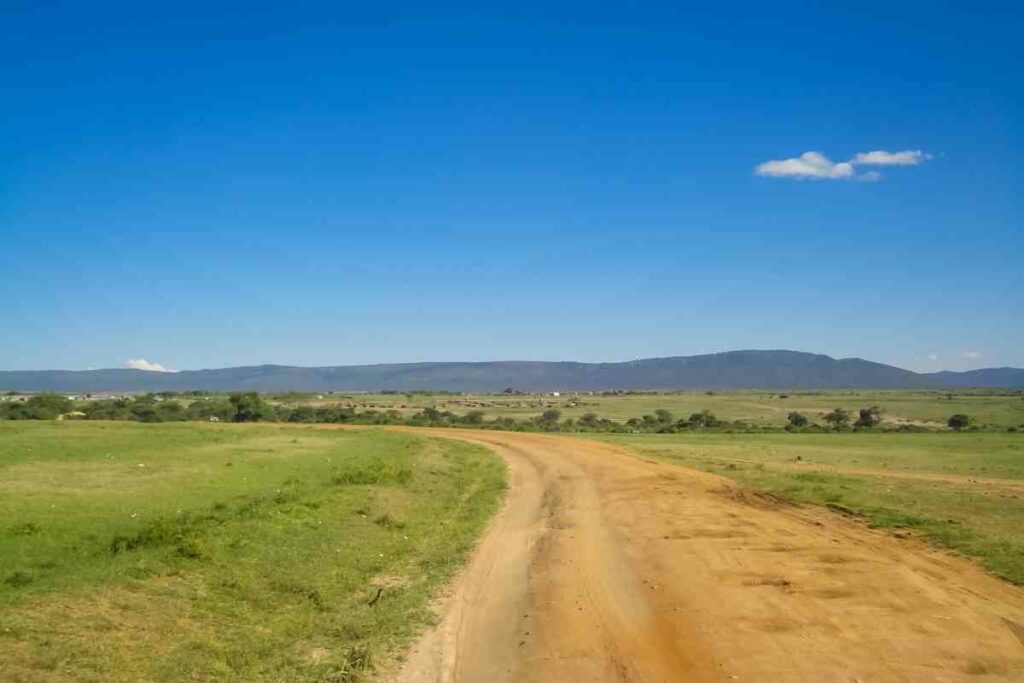
Branch off the A104 before the Limuru junction to the B3 heading to Narok town.
If you start from the Jomo Kenyatta International Airport, the Southern Bypass offers the quickest route out of Nairobi.
You’ll join the A104 highway past Kikuyu before proceeding toward Limuru.
The Narok road through the C12 road is tarmacked to the Sekenani Gate, the main gate of Mara.
The entrance is also nearer to the best lodgings and camps in the park.
Apart from Sekenani, there are four other main gates to access the Mara:
- Talek Gate – North Western end of the reserve near the Talek River
- Musiara Gate – North Eastern entrance, opposite Oloololo Gate
- Oloololo Gate – North Eastern end, entry to Mara Conservancy
- Oloolaimutia Gate – Eastern end of the Mara, hilly outskirts of Oloolaimutia town
The road network to the other gates from Sekenani Gate is usually gravel which can be pretty uncomfortable.
Use 4X4 trucks or tour vans to maximize comfort.
The gates strictly open and close at 6 a.m, and 6 p.m.
Admission is restricted unless of unforeseeable cases like vehicle breakdowns.
Masai Mara Gate Charges
The daily entry fees in the Mara are quite affordable, and you can come with your entire family to the safari.
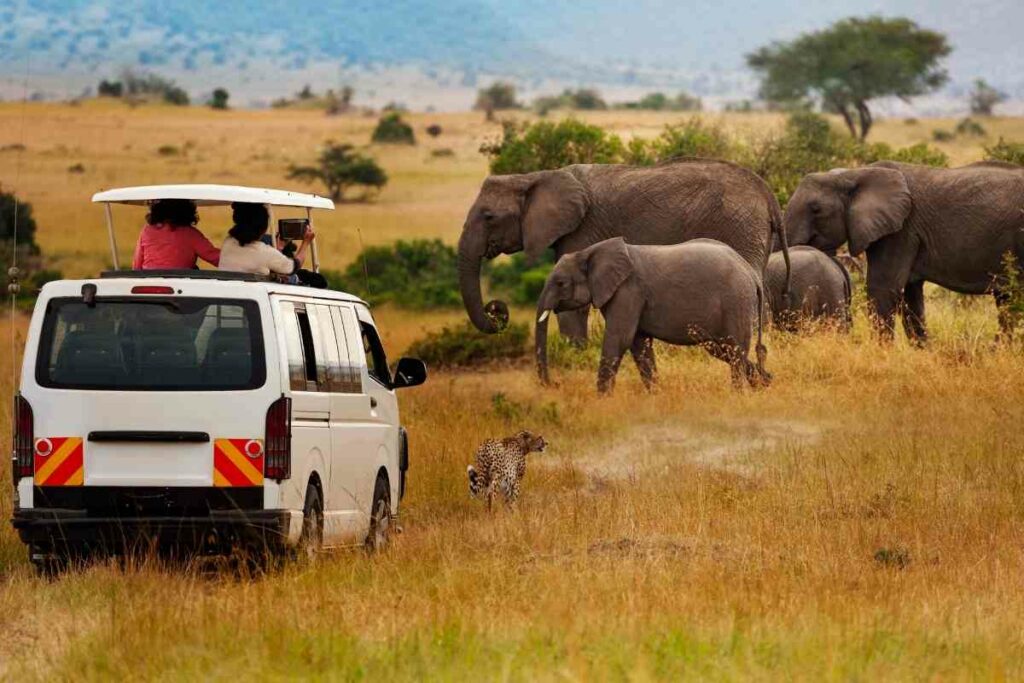
If you stay in a lodge with the main reserve, you will pay $70 for adults and $40 for any child between 3-12 years.
It is free entry for any kids below three years.
If you opt for the cheaper lodges and camps outside the main reserve, the charges are$80 and $45 for adults and kids, respectively.
Final Word
Masai Mara offers a wholesome safari experience; game drives, nature walks, hot balloon safaris, and cultural interactions.
With over 300,000 tour visits in a year, you can never go wrong in selecting the Masai Mara National Reserve as your safari destination.


